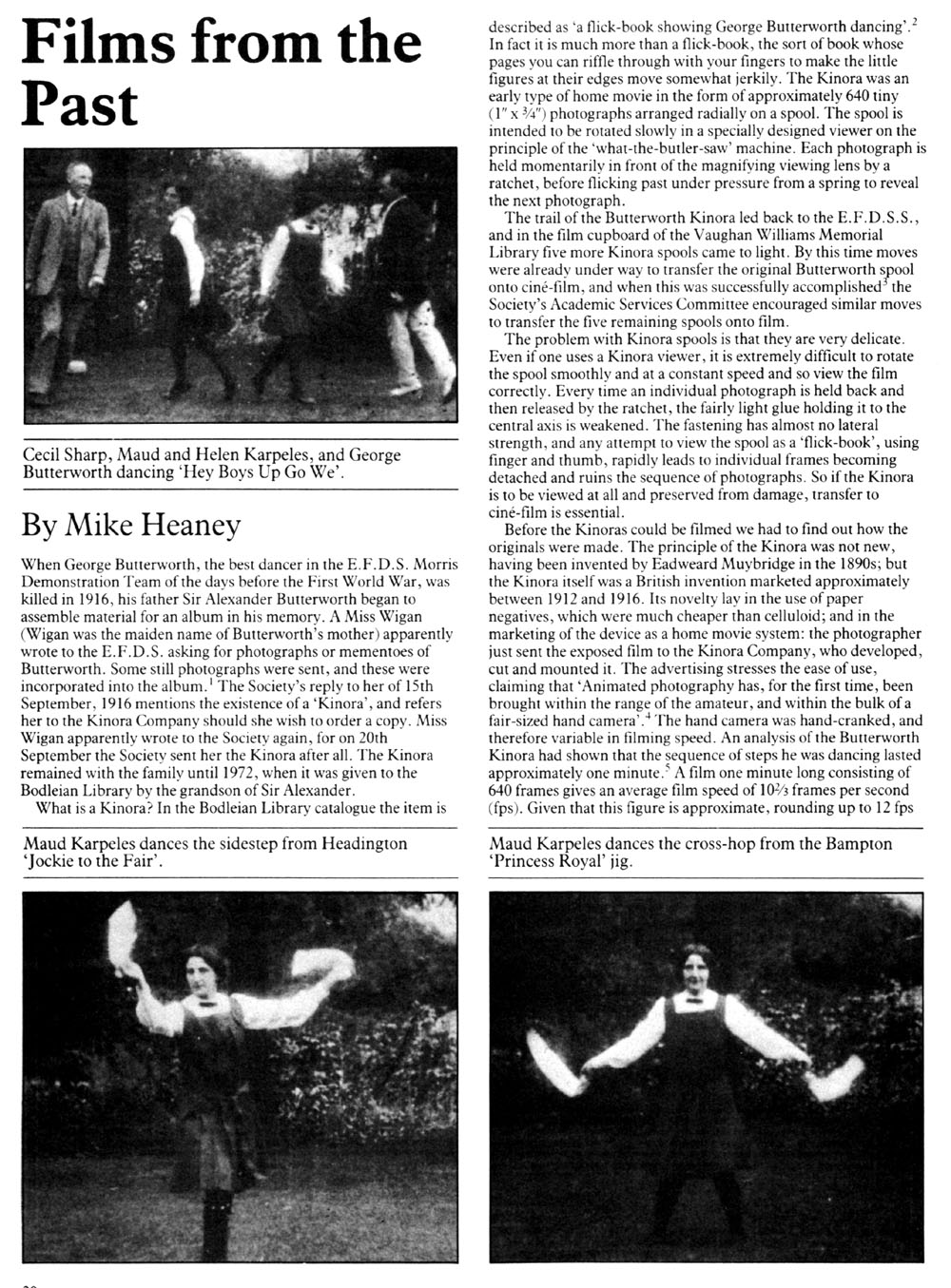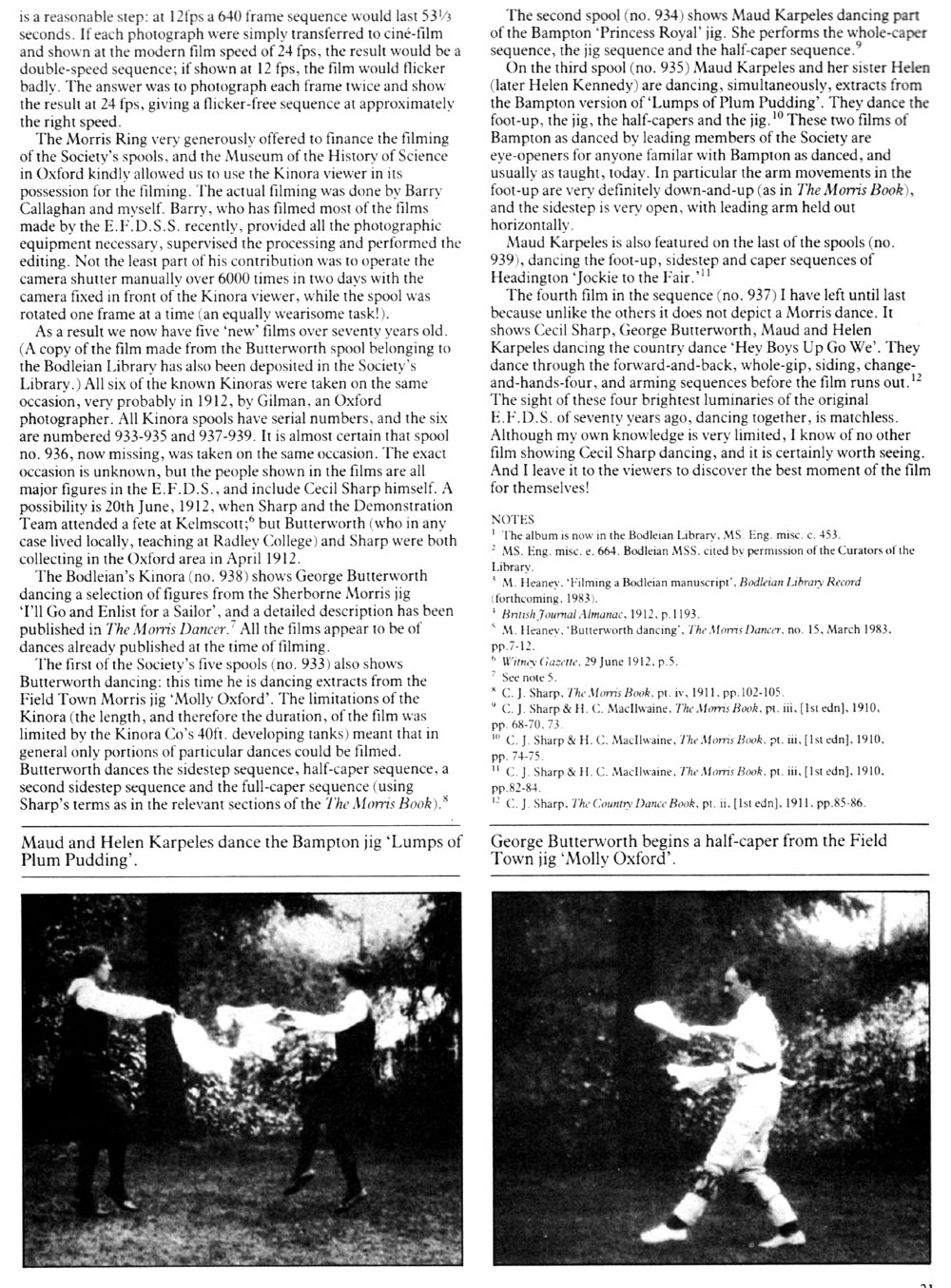Original pages from English Dance & Song, Autumn/Winter 1983


Back to Dance Index
Source: Playford; published in English Dance & Song, Autumn/Winter 1983 Volume 45 Number 3
Formation: Two Couples, though the original Playford wording says "For four, or eight" dancers.
Music:
Own tune.
Notes:
Cuckolds All A Row starts at 3:23.
In The Diary of Samuel Pepys for Wednesday 31 December 1662 Pepys describes King Charles II dancing this dance.
"Then to country dances; the King leading the first, which he called for; which was, says he, "Cuckolds all awry," the old dance of England." (Since a number of the men were dancing with their mistresses, the "old dance" may not just refer to dancing!)
John Playford published the dances as Cuckolds all arow in 1651.
Most of the instructions are reasonably clear, and most interpretations are identical, apart from the first chorus which says, "Turn back to back with the co. we. faces again". Cecil Sharp invented a figure that he called WHOLE-GIP FACING OUTWARD; you can see him attempting to perform it in the video above. Many people are dubious about this interpretation of the figure. You can read my analysis of it here. There is an interesting version of the dance performed here by the Newcastle Country Dancers. When I just instruct beginners to "turn back to back", without any further clarification, that is what most of them will do (though not necessarily with the bumping of backsides!).
The Round has published Cecil Sharp's interpretation; check the note at the bottom of the page and you will see that they no longer use Sharp's move either.
You will also notice that Cecil Sharp renamed the dance as "Hey, Boys, Up We Go", presumably because he thought his Victorian readers would not appreciate the original title. (To modern sensibilities the new title could also be miscounstrued!) Hey-boys up go we is a completely different Playford dance!
The next instruction in the original wording is "go about the co. we. not turning your faces". While most people interpret this as a Whole Gyp, I believe that it was intended to be a back to back.
That is all background information. The wonderful thing is that we can see Sharp and his friends dancing it back in circa 1912. This is all thanks to Mike Heaney. His article from English Dance & Song is shown below. Mike also very kindly provided these other two documents that give even more background information:


I'd love to hear from you if you know anything more about this dance, its composer, its style, or its history.
Feedback is very welcome on any aspect of these dances or Web pages.
Please contact John Sweeney with your comments.
